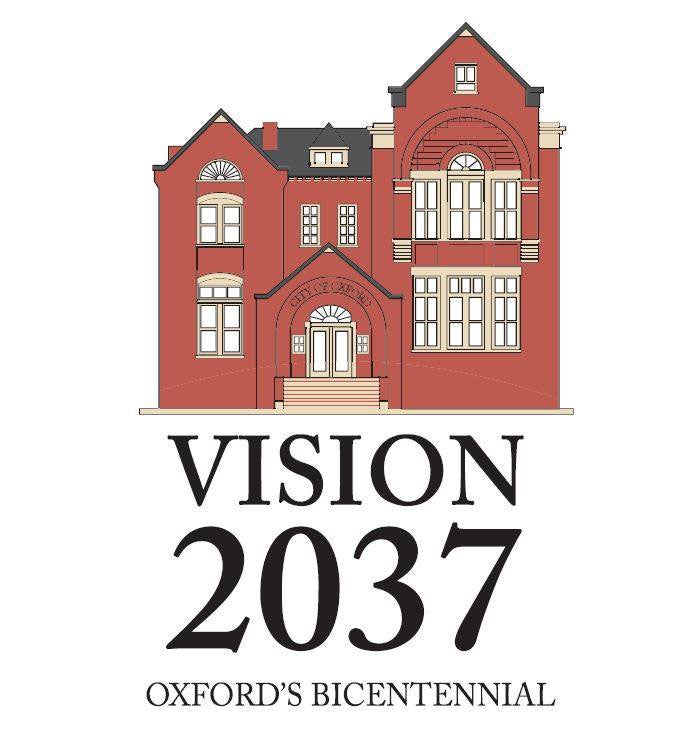Oxford considers jump-starting new zoning districts
Published 10:26 am Wednesday, October 19, 2016
When property owners wanted to develop large areas of land, like Grand Oaks, they filed a Planned Use Development, or PUD, with the city of Oxford. With the recent adoption of the Vision 2037 Comprehensive Plan, developers will have more options in how large parcels of land can be developed and zoned.
One of those options, the Traditional Neighborhood Development, or TND, is being considered for approval by the Oxford Board of Aldermen and city planners say the intent of the new zoning district is to create more “places.” It’s for parcels of land 30 to 100 acres in size.
A TND is intended to “primary serve the residential needs of urban areas and has an overall higher residential density than suburban residential subdivisions.” There’s a wider variety of housing types – from size to affordability, with higher density housing closer to the center and the lower density, single-family homes toward the edges of the neighborhood.
There should be a business center that provides 30,000-square feet for services, civic and retail uses with the potential for upper floor housing. There should be parks, schools, or other public features that are easily accessible on foot or by bicycle.
In a TND, buildings are to be close to the street at a “human scale with wide tree-lined sidewalks that include space for outdoor uses such as café seating or sales tables.
“Parking for vehicles is on-street or in parking lots or garages that are primarily behind or underneath buildings,” said City Planner Judy Daniel.
Unlike single-zoned developments, a TND is intended to provide for an entire neighborhood that includes mixed-uses, single-family homes with roads, sidewalks and green spaces. Developers will submit a Master Regulating Plan that will include topographic survey, stormwater drainage plan, layout and location of streets and public open spaces and parking areas, location of commercial, mixed-use and civic building lots, densities of buildings by types, setbacks, architectural renderings, covenants, tree survey inventory and plan, landscape plan, scaled drawing of the site and more.
A TND request will go before the Site Plan Review Committee before going before the Oxford Planning Commission, which will make a recommendation to the Board of Aldermen whether to approve the TND. If approved, the developer will have two years to begin construction.
“If nothing happens in two years, that’s a lot of land being tied up,” Daniel told the aldermen.
If approved by the aldermen, the TND zoning will be the first of the new type of zoning districts that are coming down the road in Oxford to fit with the Vision 2037 plan.
Triggers in place
The plan also includes triggers for the development of each building type. For example, a certain amount of commercial space needs to be built before additional housing can be built.
Aldermen Jason Bailey asked what happens if the economy falls like it did in 2009 and a developer can’t afford to meet a trigger before moving on to build more residential buildings.
“Then they can come back before the planning commission and talk about it and ask for more time,” Daniel replied.
The plan sets minimums and maximums for types of development. Single-family detached buildings, like townhouses, can make up 10 to 30 percent of the plan, while single-family unattached homes should make up 25 to 50 percent. Retail can be 5 to 20 percent of the plan and mixed can be 5 to 15 percent of the plan. A developer must include enough parks and open spaces to be 10 percent of the overall plan but there’s no maximum in the amount of open space allowed.
Daniel said the new TND zoning reflect the new vision and direction of creating places.
“It sets patterns for creating mixed-use full neighborhoods rather than disconnected shopping areas and residential subdivisions,” she said. “It will allow some of Oxford’s forward-thinking developers to start working on this type of development while the rest of the changes to the Land Development Code are underway.”
A second hearing and public meeting will be held at 5 p.m. On Nov. 1 at City Hall. The aldermen are expected to vote on the new zoning district at their Nov. 15 meeting.
Other business Tuesday
• Recognized Oxford Park Commission Program Director Mike Young for being named the Mississippi Recreation and Park Association’s Recreational Professional of the Year and OPC programs Leisure Lifestyles and Outdoor Events that were also recognized as outstanding programs by the MRPA.
• Approved an agreement with the LQC Lamar Foundation to allow the foundation to use office space inside the LQC Lamar House and Museum.
• Adopted a proclamation declaring October as Stand Beside Her Month, an initiative developed by the Girls Scouts Heart of the South, to help young girls reach their full potential.
• Approved an amendment to the Oxford Police Department budget by $13,000 after accepting a $13,000 grant from Blue Cross Blue Shield with no match.
• Accepted the annual audit and TVA Annual Report for the Oxford Electric Department. Superintendent Rob Neely reported the audit was “clean” and that OED was in good financial shape.
• Approved the preliminary plat for the Fairmont development in Grand Oaks Phase IV.
• Approve preliminary and final plats for Oxford Farm Phase V, a three-lot commercial subdivision.
• Approved the final plat for Oxford Farms Phase IV, The Helix multi-unit development.
• Approved the final plat for Stone Subdivision.
• Gave permission to allow the Public Works Department to work with a private developer to expand the certificated area for water and sewer service north of Oxford.






